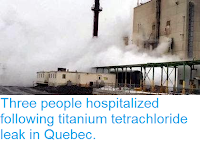Natural Resources Canada
recorded a Magnitude 3.6 Earthquake at a depth of 18 km, about 39 km to the north of the city of Montreal in Quebec, slightly after 3.20 am local time (slightly after 7.20 am GMT) on Sunday 29 March 2020. There are no reports of any damage
or injuries associated with this event, though it was felt across much of southern Quebec as well as in the US state of Vermont.
The approximate location of the 29 March 2020 Montreal Earthquake. USGS.
The quake took place within the Western Quebec Seismic Zone, an area of
intraplate seismic activity underlying part of southwest Quebec and
southeast Ontario. The precise cause of tectonic activity here is
unclear, with different opinions being held by geologists in the area.
The area is underlain by a number of ancient deep faults associated with
ancient mountain-building episodes, though it is unclear how these
relate to the quakes. Alternatively the activity may be related to
the Great Meteor Hot Spot an area of magmatic upwelling that originates
deep beneath the Earth's tectonic plates, and therefore moves separately
of them. The hotspot is currently located to the south of the Azores,
though it has been active for at least 125 million years, moving across
southwest Canada and the eastern United States before crossing the
Atlantic Ocean. Finally the events could be the result of glacial
rebound; until about 10 000 much of northern North America was covered
by a thick layer of glacial ice, which pushed the rocks of the
lithosphere down into the underlying mantle. The ice as now long since
melted, but the rocks are still springing back into their original
position, causing the occasional Earthquake in the process.
Witness reports can help geologists to understand the processes going on
in Earthquakes and the structures in the rocks that cause them. If you
felt this quake you can report it to Natural Resources Canada here.
See also...
Follow Sciency Thoughts on Facebook.







